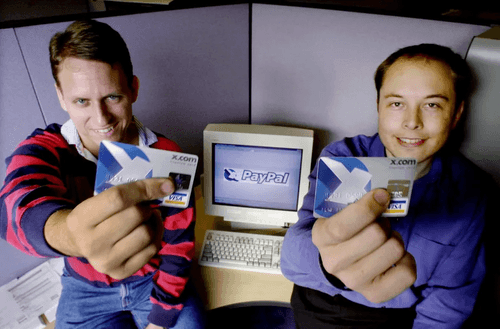Must-Have Features for SaaS Websites to Drive Conversions
Improve your SaaS website's conversion rate with these effective strategies. Learn which features and strategies can increase your company's revenue.

When Salesforce and Calendly first started out as SaaS companies, they faced many of the same challenges that other startups encounter. They had a great product but struggled to attract and convert visitors to their websites.
However, with a relentless focus on optimizing their websites for better conversion rates, they were able to overcome these obstacles and grow into one of the most successful SaaS companies in the world. Salesforce, for example, started out with a website that was cluttered and confusing.
Visitors had a hard time figuring out what the company did and how its products could help them. To address this issue, Salesforce started experimenting with A/B testing.
They created multiple versions of their website, each with different messaging and layouts, and tested them with small groups of visitors to see which ones performed the best.
Through this iterative process, they were able to identify the elements that resonated most with their audience and incorporate them into their final website design. Similarly, Calendly struggled to communicate the value of its product to potential customers.
They offered a simple scheduling solution that could save users hours each week, but their website failed to convey this message effectively. To solve this problem, Calendly invested heavily in personalized content and messaging.
They created targeted landing pages for different segments of their audience, and used dynamic content to customize the user experience based on each visitor's interests and needs. This approach helped Calendly connect with users on a more personal level and increase their conversion rates.
Both Salesforce and Calendly are great examples of how SaaS companies can increase their website conversion rates through experimentation, optimization, and a focus on the needs of their customers. By taking a page from their playbook and implementing some of the strategies we'll discuss in this article, you can do the same for your own SaaS website.
Create an Affiliate Marketing Program
Affiliate marketing is a powerful strategy that can help SaaS companies increase their revenue and grow their customer base. With affiliates, you can reach new markets and audiences with no upfront investment to you.
Amazon was able to increase its e-commerce sales by over 40% with its Amazon Affiliate Marketing Program. Affiliates of Amazon receive commissions of up to 20% for every sale they make through their links.
Here are some steps to create an effective affiliate marketing program for your SaaS business:
- Define Your Commission Structure. The first step in creating an affiliate marketing program is to define your commission structure. This is the percentage of revenue that you'll pay to your affiliates for each sale they refer to. The commission structure should be competitive enough to incentivize affiliates to promote your software, but not so high that it eats into your profits. A common commission structure is a percentage of the sale, usually around 10-30%.
- Find the Right Affiliates. To get the most out of your affiliate marketing program, you need to partner with the right affiliates. Look for (micro) influencers or content creators in your industry who have a loyal following and an engaged audience. You can also reach out to bloggers and podcasters.
- Provide High-Quality Marketing Materials. To make it easy for your affiliates to promote your products, provide them with high-quality marketing materials, such as banners, images, and copy. You can also create custom landing pages or discount codes for your affiliates to use. The easier you make it for your affiliates to promote your service, the more likely they are to do so.
- Track Your Results. It's essential to track the results of your affiliate marketing program to measure its effectiveness. Use a tracking system to monitor the sales and revenue generated by your affiliates. This information will help you identify your top-performing affiliates and optimize your program for maximum results.
Creating and integrating an Affiliate Marketing Platform into your SaaS can be a tedious and time-consuming process. Luckily, several affiliate marketing platforms like UpPromote can help you create and manage affiliate links without writing code.
Keep Optimizing The User Experience
Investing in your website's user experience is one of the best ways to drive higher conversion rates and boost your revenue. This has been realized by many SaaS giants who have taken steps to improve their user experience.
For example, Slack, the workplace communication platform, saw that their users were not as engaged as they wanted them to be. To address this, they decided to improve their user experience by redesigning their user interface. This redesign made their platform more intuitive and user-friendly, leading to a more seamless user experience. The result was a significant increase in user engagement by over 10%.
Similarly, Dropbox, the cloud storage provider, faced a challenge in increasing its conversion rate. They optimized their user experience by simplifying their sign-up process and making it more user-friendly. This simple change led to an increase in sign-ups and a boost in revenue for the company, and a 19% increase in conversion rate.
But these examples are not just anecdotes. Research reports also support the importance of optimizing your user experience. Forrester, a market research firm, has found that every dollar invested in user experience can result in a return of up to $100.
So, it's clear that optimizing your website's UX can lead to significant benefits for your business. By investing in improving your site you can increase user engagement, boost your conversion rate, and ultimately, increase your revenue.
Use 3rd Party Tools to improve Conversion Rate
Optimizing your user experience is crucial for improving conversions, but it's not the only factor at play. By leveraging 3rd party tools like Hotjar, Intercom, and SEMrush, you can gain even deeper insights into your users and take additional steps to improve your website's performance, customer support, and search engine ranking leading to significant increases in conversion rates.
#1 hotjar
Hotjar provides insights into how users interact with your website. With features such as heatmaps and session recordings, you can exactly see where users are clicking, scrolling, and spending the most time on your site. Analyzing this data can help you identify areas of your website that may need improvement and make data-driven decisions that lead to an increase in revenue.
HubSpot, one of Hotjar's most notable customers was struggling with a low conversion rate on their website, and they turned to Hotjar to help them identify the root cause of the problem. By using heatmaps, HubSpot was able to pinpoint areas of their website that were causing users to leave or disengage. Armed with this information, they were able to make targeted improvements that led to a 21% increase in their conversion rate.
#2 Intercom
Intercom is a customer messaging platform that allows you to communicate with your users in real-time. With Intercom, you can engage with your users, answer their questions, and guide them through your SaaS site. By providing excellent customer support and guidance, you can improve the overall user experience and prevent churns.
Exellent customer service can lead to a lower churn rate and higher customer retention. A study by Bain & Company found that increasing customer retention rates by just 5% can lead to a 25% increase in profits. Retaining existing customers are much more cost-effective than acquiring new ones. Therefore, investing in customer service to improve retention rates can have a significant impact on a SaaS business's bottom line.
#3 SEMrush
Content Marketing can be very effective if you do it right.Semrushoffers features such as keyword research and competitor analysis, that allows you to identify opportunities to improve your website's ranking in search engine results pages (SERPs). By improving your SEO, you can drive more traffic to your website without spending money on advertising.
Clear and Compelling Value Proposition
Copywriting is an essential component of any SaaS company's marketing strategy. It is the art of crafting persuasive and compelling text that communicates the value of a product or service to potential customers. In the SaaS industry, where businesses are selling intangible products, copywriting is particularly critical. A well-written copy can not only help a company convey its value proposition but can also create a strong emotional connection with potential customers.
One of the key benefits of good copywriting is that it can help a company differentiate itself from its competitors. In a crowded market, where many businesses offer similar products, a clear and compelling message can make all the difference. Shopify is a great example of a SaaS company that has mastered the art of copywriting.
The company's value proposition is straightforward and easy to understand, which makes it appealing to potential customers.
Shopify's value proposition is "Everything you need to sell anywhere", and it is prominently displayed on its homepage.
This statement immediately tells visitors what Shopify is all about and what it can do for them. The company's focus on simplicity and ease of use makes it an attractive option for small business owners who want to start an online store without any technical knowledge.
Shopify's value proposition is reinforced throughout from its pricing page to their customer testimonials. The company's focus on helping businesses grow and succeed is evident in every aspect of their platform. This messaging helps to build trust with potential customers and establishes Shopify as a reliable partner in the ecommerce space.
Potential customers are emotionally connected to Shopify's copy. By using language that is both engaging and relatable, the company is able to build trust and establish itself as a trusted partner in the entrepreneurial journey.
Another example is Shopify's "About Us" page tells the story of how the company was founded by entrepreneurs who wanted to make it easier for people to start their own businesses. This story not only helps potential customers connect with the brand on an emotional level but also positions Shopify as a company that truly understands the challenges faced by entrepreneurs.
Offer Free value
One of the biggest challenges for SaaS companies is convincing potential customers to take the leap and try out their SaaS product. With so many options on the market, customers are often hesitant to commit to something new without some assurance that it will meet their needs.
Content marketing is one of the most effective approaches, as it allows companies to create informative and engaging content that addresses the needs and pain points of their target audience. By providing helpful tips, insights, and advice, SaaS companies can establish themselves as experts in their field and build trust with potential customers.
This content can take the form of blog posts, ebooks, webinars, podcasts, and more. Blogs for instance can cover a wide range of topics, from industry news and trends to product updates and customer success stories.
Another powerful way to offer value to potential customers is by offering free trials or demos. This allows customers to test your offering before committing to a purchase, giving them a chance to see how it works and whether it meets their needs. Many SaaS companies offer free trials for a set period, typically ranging from 7 to 30 days.
You can also offer free value by providing educational resources such as tutorials, online courses, and how-to guides. These resources can help customers get the most out of your SaaS, and can also help to build a sense of community and loyalty around the brand. Show that you are invested in your customer's success and are willing to go the extra mile to help them achieve their goals.
It is also effective to offer a freemium model, where customers can use a limited version of your platform for free, but need to upgrade to a paid plan to access more advanced features or capabilities. This approach allows customers to try out your SaaS with no commitment and can be an effective way to build a user base and generate revenue over time.
Test different Landing Pages (A/B Testing)
Jeff Bezos was not satisfied with the traditional way of developing products and testing them. He wanted to find a better way to ensure that the products his company offered were what the customers really wanted. That's when he came up with the idea of A/B testing.
He knew that the success of his startup depended on getting things right from the start. He understood that even small changes to the website's design could make a big difference in the user experience, and ultimately, the success of the company.
A/B testing was not a new concept at the time. It had been used in other industries, but not in the tech world. Jeff Bezos saw the potential of A/B testing and decided to implement it in Amazon's product development process.
To do A/B testing, Amazon would randomly split their customers into two groups. One group would see the original version of the website, while the other group would see the new version with the changes that were being tested. Amazon would then monitor how each group interacted with the site and gather data on which version performed better.
Jeff Bezos believed that A/B testing was the best way to ensure that the products Amazon offered were what the customers wanted. He once said, "Our culture is friendly and intense, but if push comes to shove, we'll settle for intense. A company culture that's based on experimentation is key to innovating and staying ahead of the competition."
Amazon's use of A/B testing proved to be very successful. It allowed the company to quickly test new features and ideas, and make data-driven decisions about which ones to implement. This approach helped Amazon to constantly improve its products and services, and it played a big part in the company's success as a startup.
The company continues to use A/B testing to improve its website and user experience, testing everything from the color of buttons to the wording of headlines.
Today, A/B testing is widely used in the tech industry and beyond. It's a powerful tool for businesses of all sizes to improve their products and services and ensure that they are meeting the needs of their customers. By using data-driven insights to make decisions, companies can stay ahead of the curve and continue to grow and thrive in a competitive market.
Conclusion
I believe that in order for a company to be successful in the digital age, it must focus on creating a user-centric experience and continuously test and improve its marketing strategies. This is why Amazon, has implemented various tactics such as creating an affiliate marketing program, utilizing third-party tools to improve conversion rates, and ensuring they have a clear and compelling value proposition that resonates with our target audience.
But perhaps the most important aspect of building a successful tech company is to maintain a long-term focus and to constantly innovate and experiment with new ideas. So stay focused on the customer, and never stop experimenting and learning. These are the keys to success in the world of tech.




